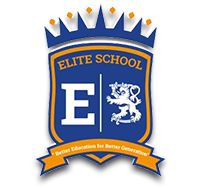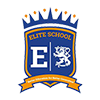Mathematics
I. Course description and aims
The framework for MYP mathematics outlines four branches of mathematical study.
1. Number
2. Algebra
3. Geometry and trigonometry
4. Statistics and probability
The study of mathematics is a fundamental part of a balanced education. It promotes a powerful universal language, analytical reasoning and problem-solving skills that contribute to the development of logical, abstract and critical thinking. The MYP mathematics and extended mathematics courses promote both inquiry and application, helping students to develop problem-solving techniques that transcend the discipline and are useful in the world outside school.
Mathematics in the MYP is tailored to the needs of students, seeking to intrigue and motivate them to want to learn its principles. Students should see authentic examples of how mathematics is useful and relevant to their lives and be encouraged to apply it to new situations.
The aims of MYP mathematics courses are to encourage and enable students to:
- enjoy mathematics, develop curiosity and begin to appreciate its elegance and power
- develop an understanding of the principles and nature of mathematics
- communicate clearly and confidently in a variety of contexts
- develop logical, critical and creative thinking
- develop confidence, perseverance and independence in mathematical thinking and problem-solving
- develop powers of generalization and abstraction
- apply and transfer skills to a wide range of real-life situations, other areas of knowledge and future developments
- appreciate how developments in technology and mathematics have influenced each other; the moral, social and ethical implications arising from the work of mathematicians and the applications of mathematics; the international dimension in mathematics; and the contribution of mathematics to other areas of knowledge
- develop the knowledge, skills and attitudes necessary to pursue further studies in mathematics
- develop the ability to reflect critically upon their own work and the work of others
II. Curriculum overview
For MYP mathematics, schools can develop courses at two level of challenge: standard and extended.
Standard mathematics aims to provide a sound knowledge of basic mathematical principles. Extended mathematics supplements the standard curriculum with additional topics and skills, providing greater breadth and depth of study.
The MYP promotes sustained inquiry in mathematics by developing conceptual understanding within global contexts.
Key concepts such asform, logic and relationshipsbroadly frame the MYP curriculum.
Related concepts promote deeper learning grounded in specific disciplines. Examples of related concepts in MYP mathematics include equivalence, measurement, quantity and justification.
Students explore key and related concepts through MYP global contexts.
- Identities and relationships
- Orientation in space and time
- Personal and cultural expression
- Scientific and technical innovation
- Globalization and sustainability
- Fairness and development
The MYP curriculum framework offers schools flexibility to determine engaging, relevant, challenging and significant content that meets local and national curriculum requirements. This inquiry-based curriculum explores factual, conceptual and debatable questions in the study of mathematics.
The MYP requires at least 50 hours of teaching time for each subject area in each year of the programme. For students participating in MYP eAssessment, the IB recommends 70 hours of guided learning each year in MYP years 4 and 5
III. Assessment Criteria
Each mathematics objective corresponds to one of four equally weighted assessment criteria. Each criterion has eight possible achievement levels (1–8), divided into four bands with unique descriptors that teachers use to make judgments about students’ work.
Criterion A: Knowing and understanding
Students select and apply mathematics to solve problems in both familiar and unfamiliar situations in a variety of contexts, demonstrating knowledge and understanding of the framework’s branches (number, algebra, geometry and trigonometry, statistics and probability).
Criterion B: Investigating patterns
Students work through investigations to become risk-takers, inquirers and critical thinkers.
Criterion C: Communicating
Students use appropriate mathematical language and diferent forms of representation when communicating mathematical ideas, reasoning and fndings, both orally and in writing.
Criterion D: Applying mathematics in real-life contexts
Students transfer theoretical mathematical knowledge into real-world situations and apply appropriate problem-solving strategies, draw valid conclusions and refect upon their results

